You are here
How to Make Mool Naeng Myun (Korean Noodles with a Refreshing Broth)
 Mool naeng myun is a favorite summertime dish in Korea, and is best known for its refreshingly cool and tangy broth. Mool is Korean for "water," while naeng myun means buckwheat noodles.
Mool naeng myun is a favorite summertime dish in Korea, and is best known for its refreshingly cool and tangy broth. Mool is Korean for "water," while naeng myun means buckwheat noodles.
The secret to good mool naeng myun is in the broth. My mom tells me that mool naeng myun broth is traditionally made by combining one part chicken broth with one part beef broth and one part kim chi brine.
Kim chi brine gives the broth it's special tang, while the chicken and beef broths impart rich, hearty flavors to the noodles.
Since most people don't have easy access to these three ingredients at the same time, many Koreans resort to making the broth with a combination of chicken broth and a bit of vinegar, which is how I recommend making it - the flavor can be just as good, and it's definitely easier doing it this way.
Before we take a look at some pictures of how to put together mool naeng myun, allow me to make one recommendation: if you've never experienced mool naeng myun and you want to give this recipe a go, start by visiting a Korean restaurant and ordering it. This is the only way you'll get a sense of how much tang the broth should have. And you'll need this sense as you make your own broth by combining chicken broth with vinegar.
So here we go - the first step is to purchase a package of naeng myun, also known as buckwheat noodles. Here's what the packaging looks like at most Korean groceries:
And here's what the noddles look like straight out of the package:
Bring a large pot of water to a boil, take note of the time, and put noodles in to boil. Use about one bunch (what you can hold in one hand) of noodles for each serving.
Allow noodles to boil for 3-4 minutes. Be sure not to exceed 4 minutes, as you want the noodles to retain a bit of chewiness.
Strain noodles, then give them a good rinse in icy cold water.
Follow this up by putting a good handful of cooked noodles in each bowl, just like this:
Now add one soft boiled egg (halved) and any vegetables that you enjoy to the dish.
Cucumbers and radish, usually pickled beforehand and finely sliced, are commonly added to mool naeng myung. You can add raw, non-pickled varieties of course, and if you like a hint of natural sweetness, add some finely sliced pears or apples.
On this particular day, we used pickled cucumber, radish, and soft boiled eggs.
Here's a closer look at the pickled vegetables:
And here's a look at everything together:
Now the final and most important step: adding the broth.
If you have beef broth, chicken broth, and kim chi brine readily available, combine them 1:1:1, make sure the broth is chilled, and add it to complete this dish.
If all you have is chicken broth, then pour the chicken broth into a large bowl and add two tablespoons of brown rice or white vinegar to the broth. Give the broth a swirl, taste, and add more vinegar if you prefer more tang - this is where having had a taste of mool naeng myung will come in handy as you add just the right amount of vinegar.
If your chicken broth is unsalted, be sure to season it with sea salt.
Keep the broth in the refrigerator, or if you're pressed for time, add a few ice cubes a few minutes before serving.
Now pour the broth over the noodles and other ingredients.
You want to be generous with the broth - put enough in there to cover about three-quarters of everything.
And that's it. Pretty simple, right? Give things a good mix with your chopsticks or fork as you're eating, and here's the key to enjoying mool naeng myun: With each mouthful of noodles and vegetables and egg, bring the bowl up to your mouth and take a sip of the cold and tangy broth. This is how old school Koreans eat mool naeng myun, so this is how you should eat it, too. :)
Seriously, the pleasure of mool naeng myung is in the broth, so please give it a go at a Korean restaurant before giving this a try.
My understanding is that most Korean restaurants add sugar to the broth for more flavor. I say skip the sugar, and add a handful of thinly sliced ripe pear along with the sliced vegetables - many Koreans use those big, round, crispy Asian pears for this purpose.
Here's the recipe written out without pictures:
Mool Naeng Myun Recipe
Ingredients:
- One package of buckwheat noodles from a Korean grocery store - ask for naeng myun - the list of ingredients may read "buckwheat noodles" or may include a few other ingredients like "sweet potato starch," "wheat," and "salt."
- One carton of organic chicken or organic beef broth
- Sea salt
- Vinegar (brown rice vinegar is best, white vinegar will do)
- One cucumber, peeled, seeded with a spoon, then sliced into thin strips about 2 inches long
- One Asian pear, peeled and thinly sliced
- Soft boiled egg - one for each person
Directions:
Traditionally, the broth for mool naeng myun is made with about 1/3 beef broth, 1/3 chicken broth, and 1/3 kim chi brine. But because few people have easy access to all three components, most Koreans use just beef broth or chicken broth.
-
Pour organic chicken or beef broth into a large bowl. Add 2 tablespoons of vinegar, stir gently, and taste. Imagine drinking this broth while eating chewy buckwheat noodles and add more vinegar if you prefer more tang. This is the step that requires a previous encounter with well made mool naeng myun. Add a small amount of sea salt, to taste. If you have at least an hour before mealtime, put this bowl of broth in the refrigerator to chill.
-
Put buckwheat noodles into a large pot of boiling water and cook for 3-4 minutes. They should be taken out as soon as they are al dente - chewy and not too soft. At this point, put noodles in a large colander and rinse two to three times with cold water. Allow noodles to rest in the colander for a few minutes or until excess water has been drained.
-
To serve, place a large handful of noodles in a large eating bowl. Add a small bunch of cucumber strips, a few pear slices, and one soft boiled egg (cut in half right before serving) to the bowl. Then use a ladle to add a generous amount of cold and tangy broth to the bowl, enough to cover about 75 percent of the ingredients.
-
Right before eating, feel free to use scissors to cut the noodles a few times to allow for more convenient mouthfuls.
-
With each mouthful of noodles, vegetables, and egg, bring the bowl right up to your mouth and take a sip of the cold and tangy broth. Enjoy this traditional Korean summertime dish!
Note: if you don't have the time to chill the broth in the refrigerator for an hour before serving, place a few ice cubes in each person's bowl to chill while eating. Also, traditional mool naeng myun comes with a few strips of beef, so if you don't eat beef, be sure to mention this when you order it at a restaurant.
Join more than 80,000 readers worldwide who receive Dr. Ben Kim's free newsletter
Receive simple suggestions to measurably improve your health and mobility, plus alerts on specials and giveaways at our catalogue
Please Rate This
Highest Rated | Related Posts | ||







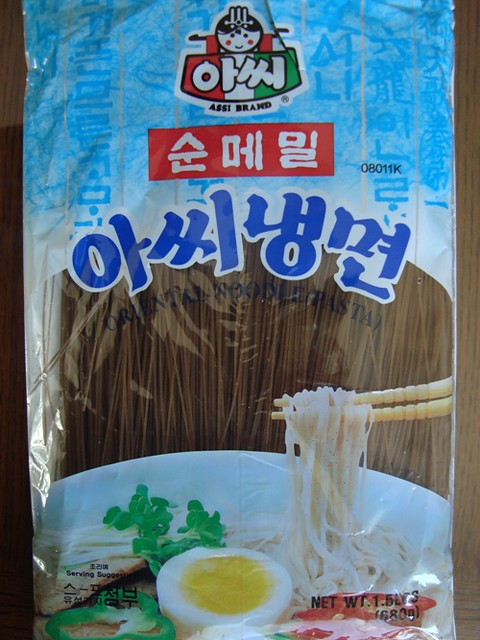
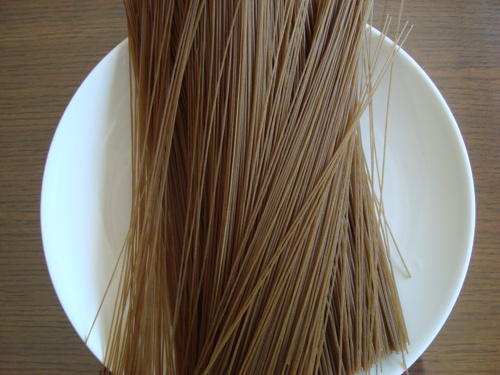
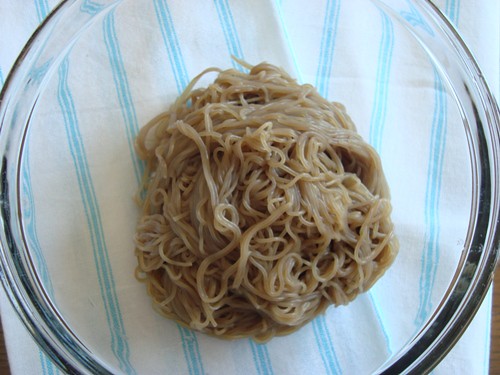
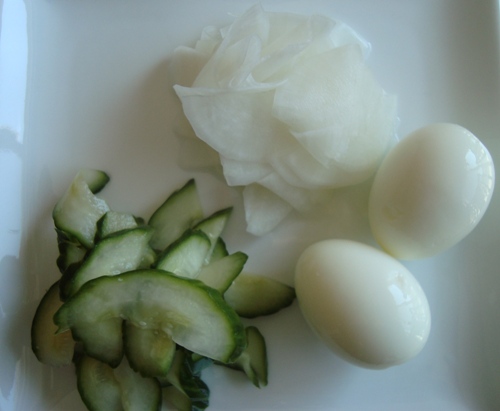
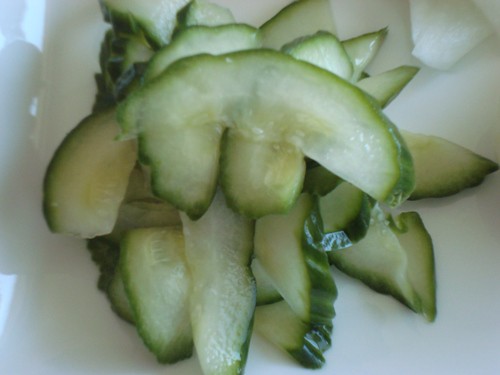
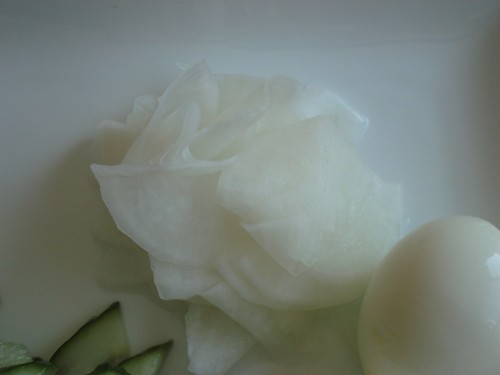
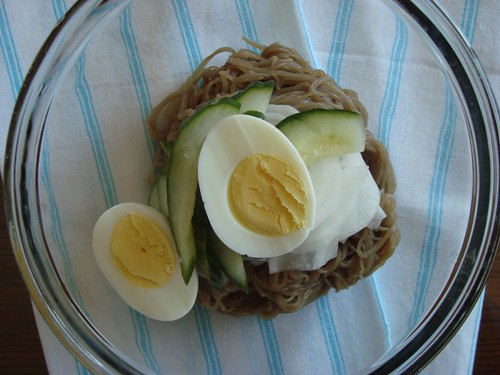
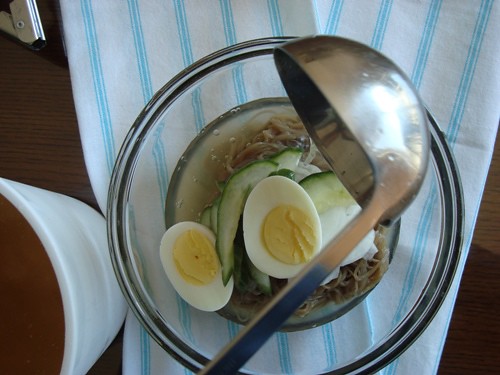
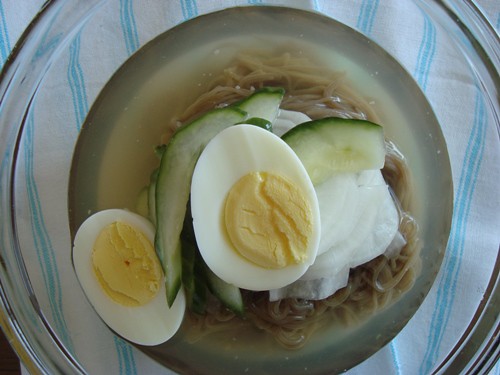




Comments
Naeng myun!
Last summer I had the pleasure of visiting South Korea and I fell in love with naeng myun! I visited Jeju Island and spent a little time in Seoul; everywhere that I ate naeng myun it was slightly different- but *always* refreshing. One was very spicy, one was very mild, another had lots of ingredients (including meat), and another had only vegetables and egg. Naeng myun is as unique as the person making it!! Thanks for this recipe, I will give it a try before the summer ends. I've only ever found (over here) the packaged kind that comes with noodles and broth. It does the job until I can taste Korean-made naeng myun again. :)
PS: I am looking for a good recipe for home-made kimchi. The ones available in the stores that I frequent are umm.... really different (this happens a lot with cultural food); I think so far I've tried three or four different store-bought kinds.
home-made kimchi
Hi, Interestingly enough, I just made a big batch of kimchi for my family, as they love it. It is simple and relatively inexpensive:
Ingredients:
Chinese cabbage, (called Nappa cabbage also)
green onions
ginger
garlic
salt
red pepper, or cayenne pepper
Step 1: Cut the cabbage in 3-4 inch pieces
Step 2: Cut up the green onions a bit smaller
Step 3: cut up the ginger and garlic, fairly small
Step 4: Mix together the cabbage and green onions and wash very well, than drain
Step 5: Get a large bowl and add everything, the cabbage, green onions, ginger, garlic, and 1 to 2 cups of salt, also add the red pepper, according to tast.
Step 6: Add water to cover the cabbage and let sit for 30 mins.
Step 7: Put it in a glass jar with a lid and refrigerate for 3 days or so. I usually check on it daily to see if it needs more salt or red pepper.
Step 8: ENJOY1
Thanks for the kimchi
Thanks for the kimchi recipe. I love to eat kimchi. When I have a time, I will try your recipe. Thanks again!
kimchi
that sounds like a lot of salt! how much of each of the ingredients do you add. Thanks for all that you do.
salt
Yes, that is WAY too much salt. You want about 1 tablespoon for each pound of cabbage. Either this was a typo, or the author forgot a step - as sometimes this amount of salt is used, and then the cabbage rinsed and drained, then the other ingredients added (I don't use this method).
I also like some shrimp - and fish sauce in my kimchee. I use the salted shrimp (tiny ones) or dried shrimp - a couple tablespoons. I use Vietnamese fish sauce also a couple tablespoons for a big five pound cabbage batch. With either you can cut a little of the salt - but this is a salty dish and without it the kimchee will spoil.
Use non-iodized salt.
buckwheat noodles
Buckwheat noodles can be purchased online through WWW. Golminenaturalfoods.com.